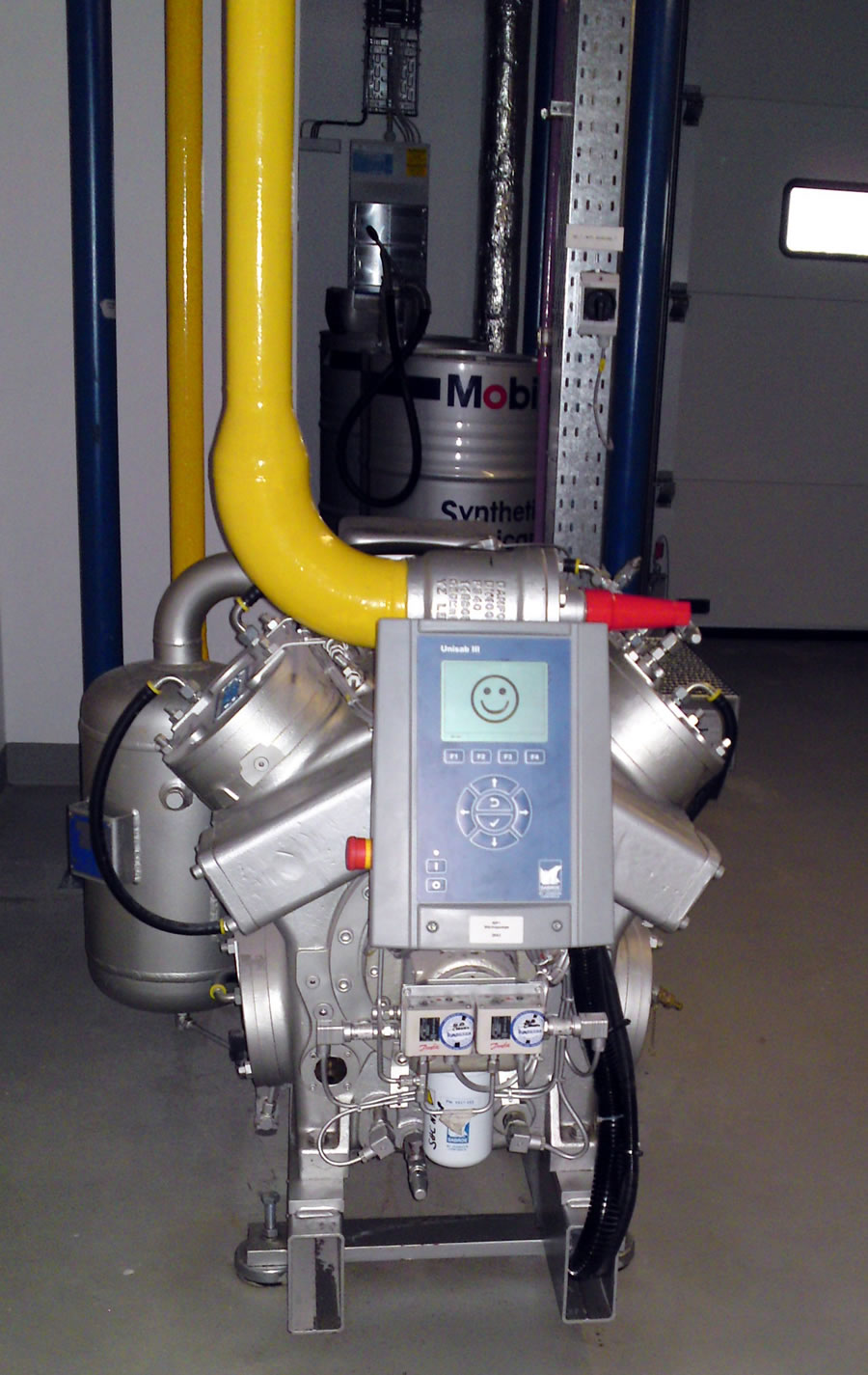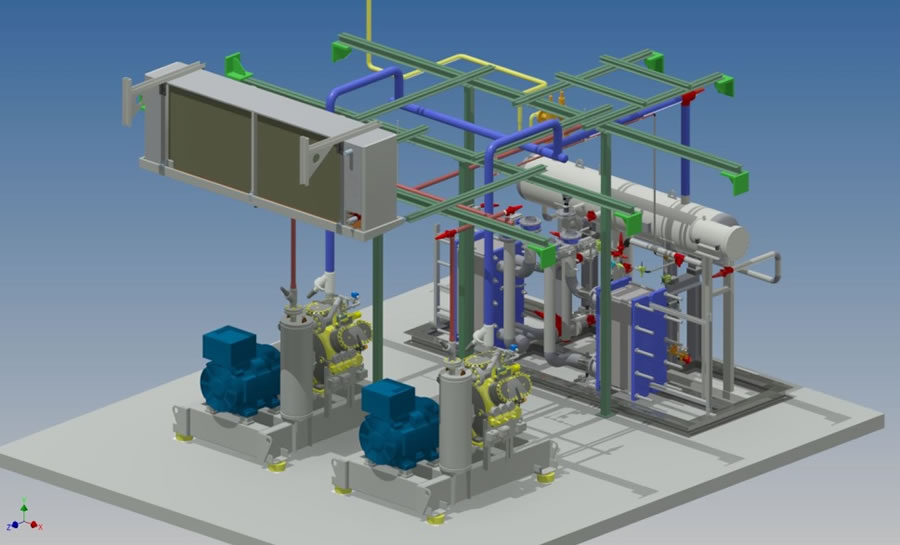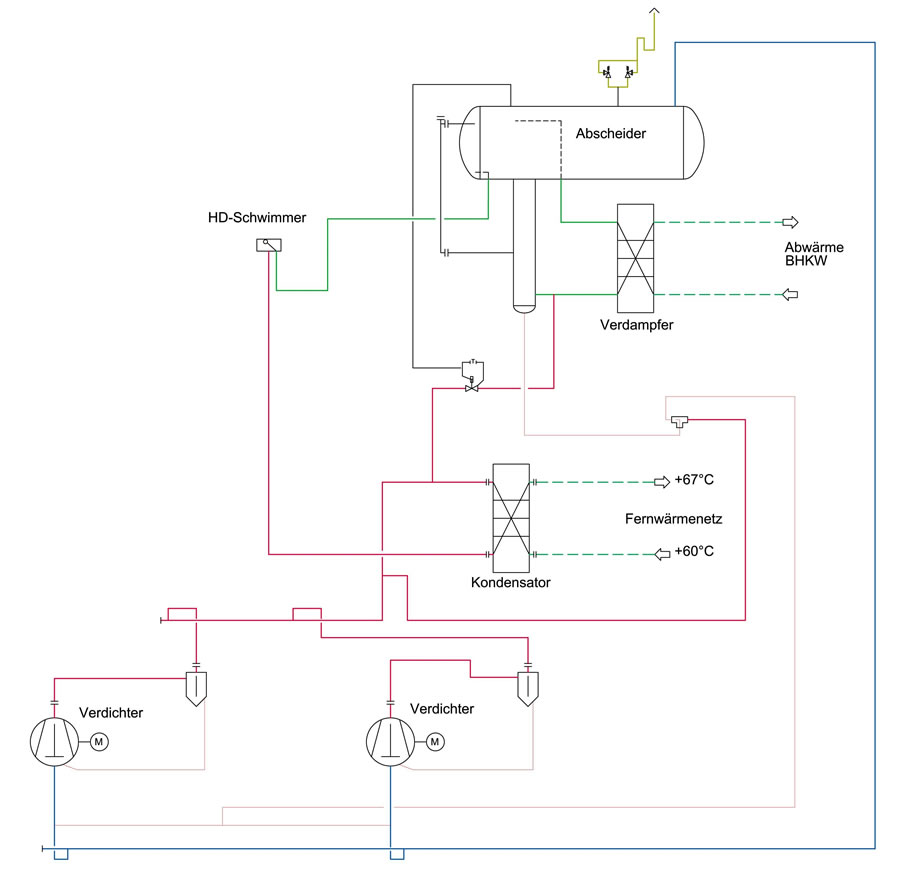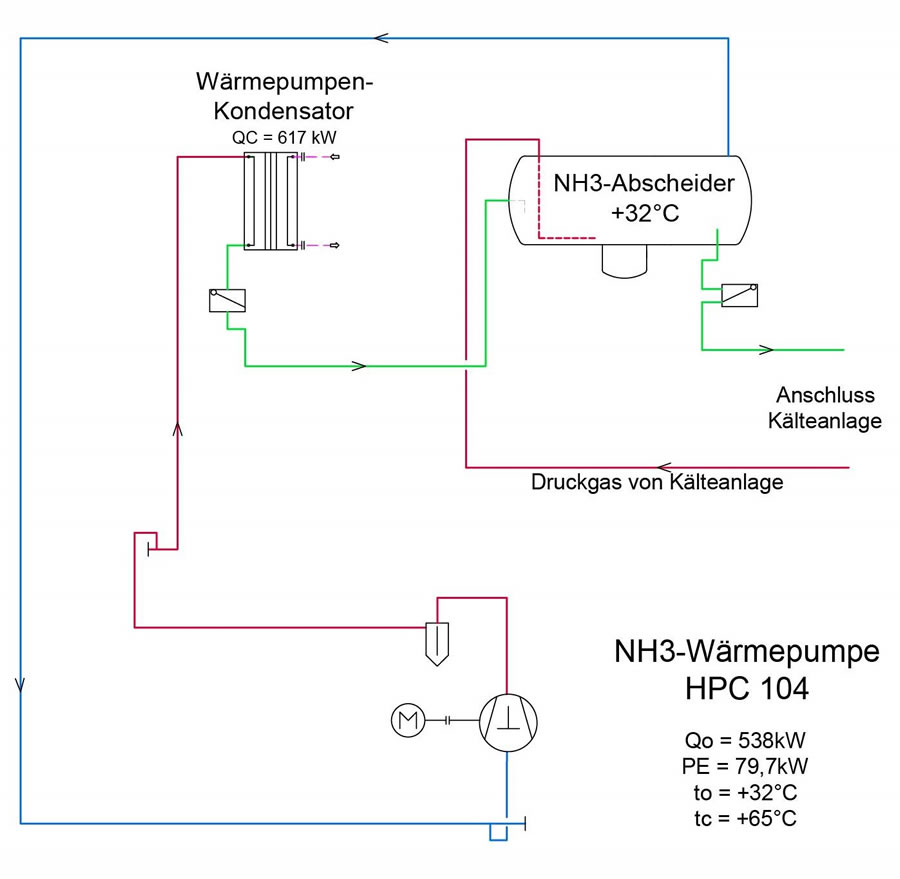ARCTOS enables the utilization of waste heat. NH3 heat pumps for heat recovery from industrial process waste heat.
Many industrial processes generate heat that cannot be utilized due to its low temperature level.
An example of this are refrigeration systems, where heat with a temperature of 25° C to 35° C is released into the environment and, as a result, heats up the surroundings without being used.
HEAT PUMPS
ARCTOS Industrial Refrigeration AG manufactures NH3 heat pumps, which use waste heat from production processes and refrigeration systems to increase the temperature to a higher level, such as +80°C, making it available for heating purposes. The NH3 heat pumps are used for cooling industrial processes and heating supply with relatively low electricity consumption.
SUPPORT POSSIBLE
Due to their significant contribution to emissions reduction, NH3 heat pump systems are currently supported by funding measures from the Federal Office of Economics and Export Control (BAFA).
| Refrigerant | R717 (NH3) |
|---|---|
| Refrigerant quantity | 90 kg |
| Maximum allowable operating pressure | 25.0 / 40.0 bar (low pressure / high pressure) |
| Evaporation temperature | +26° C |
| Condensation temperature | +72° C |
| Condensation capacity | 839 kW |
| COPH value | >5 possible |
| Compressor manufacturer and type | 2x GEA Grasso piston compressors HP65 |

Example 1: NH3 Heat Pump for Waste Heat Utilization of a CHP Plant
An example of this is an ARCTOS NH3 heat pump, which uses the waste heat from a combined heat and power (CHP) plant and feeds it into a district heating network at a higher temperature level. The natural refrigerant NH3 is used in this system, which is characterized by ecological sustainability, large volumetric cooling capacity, and the associated high efficiency.
This system is a single-stage NH3 heat pump. Compression is carried out by two frequency-controlled piston compressors from the manufacturer GEA Grasso, with a maximum operating pressure of 50 bar. ARCTOS Industriekälte AG also manufactures smaller heat pumps, which are equipped with a compressor.
On the low-pressure side, heat is absorbed at an evaporation temperature of +26° C. With this heat absorption, the generator cooling and exhaust gas cooling of a CHP plant are realized. Additionally, heat can be extracted from an exhaust air heat exchanger if there is sufficient power demand.
On the high-pressure side, a heat output of 839 kW is achieved at a condensation temperature of +72° C. This heat output is fed into a district heating network via a heat exchanger, increasing the temperature of the water from +60° C to +67° C.
Example 2: NH3 Heat Pump for Waste Heat Utilization of a Refrigeration System
Another example is an ARCTOS NH3 heat pump, which was directly considered during the planning of a refrigeration system to simultaneously provide usable heat in addition to cooling generation.
The NH3 heat pump is integrated into the NH3 refrigeration system circuit via an additional separator. This separator thus partially replaces the condenser of the refrigeration system and simultaneously serves as the evaporator for the NH3 heat pump.
| Kältemittel | R717 (NH3) |
|---|---|
| Maximum Operating Pressure | 23.0 / 40.0 bar (ND / HD) |
| Evaporation Temperature | +32° C |
| Condensation Temperature | +65° C |
| Condensation Capacity | 617 kW |
| COPH Value | >7 possible |
| Compressor Manufacturer and Type | 1x Sabroe |
| Reciprocating Compressor | HPC 104 |

The temperature in the separator is +32° C. For this heat pump, a piston compressor from the manufacturer Johnson Controls is used, which is designed for a maximum operating pressure of 40 bar.
This compressor sucks gaseous ammonia from the NH3 separator and compresses it to a pressure at which ammonia can be liquefied at a temperature of +65° C. The heat released in the condenser is used to supply a hot water tank.
The hot water is then used for production or cleaning purposes. The liquefied ammonia is expanded via a high-pressure float and returned to the separator. This liquid is then expanded again in the refrigeration system and can be used for cooling purposes.


